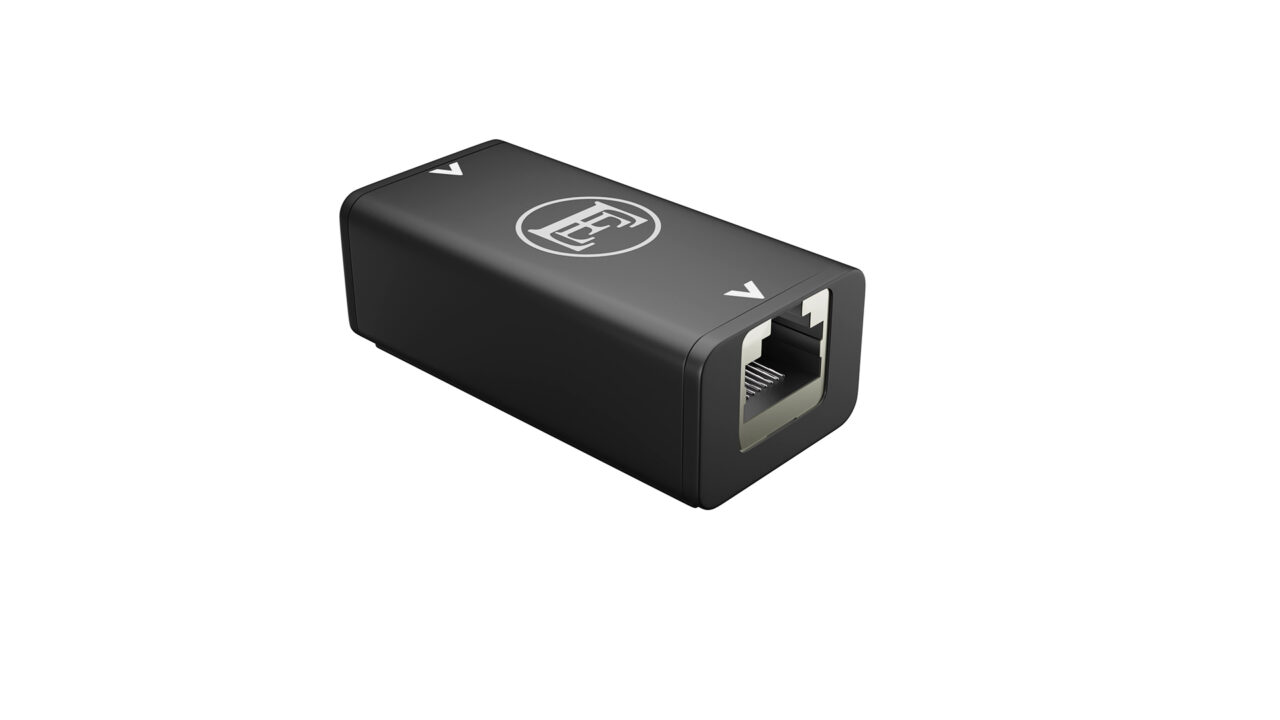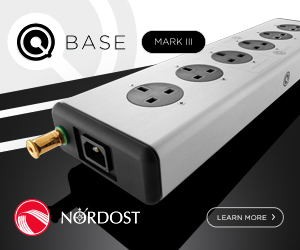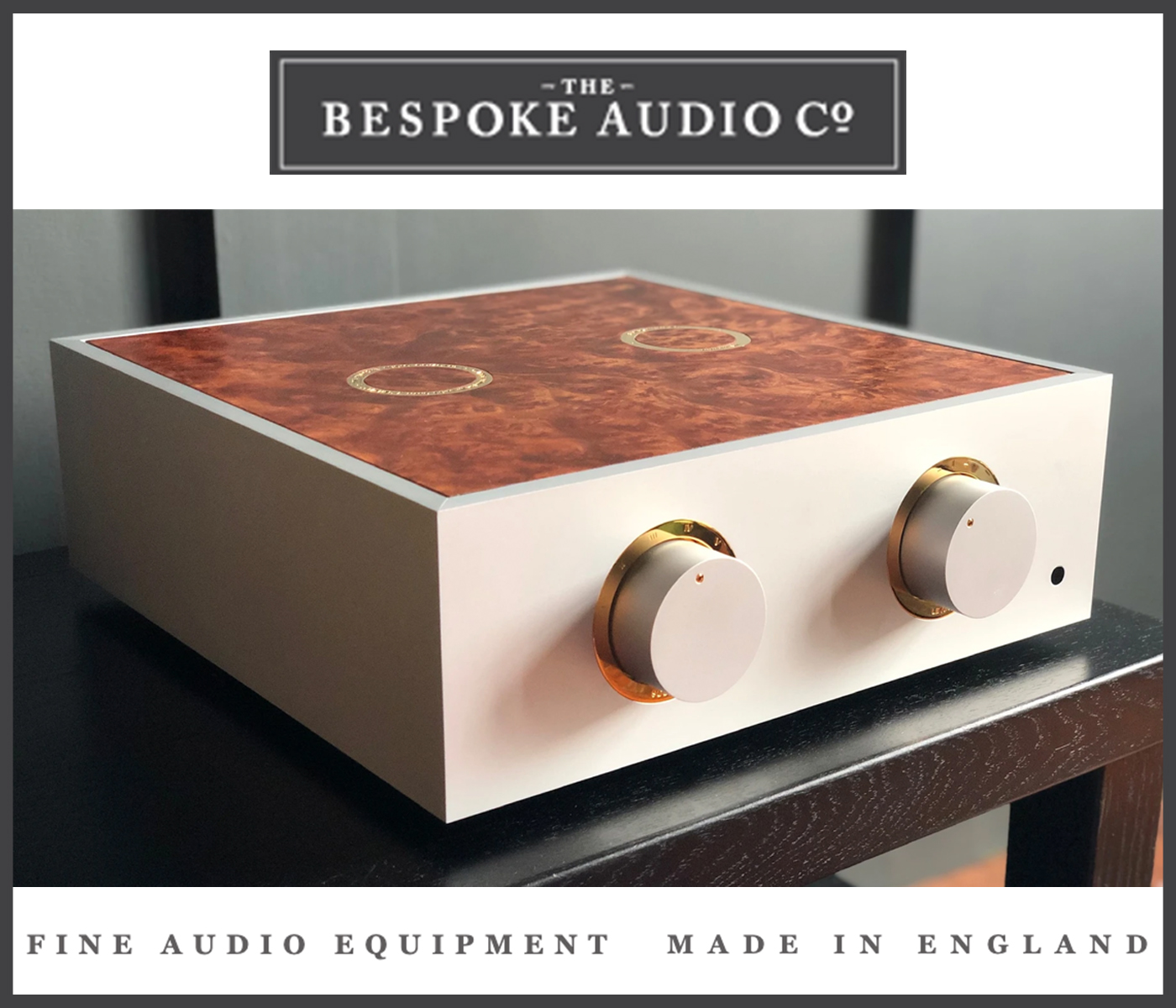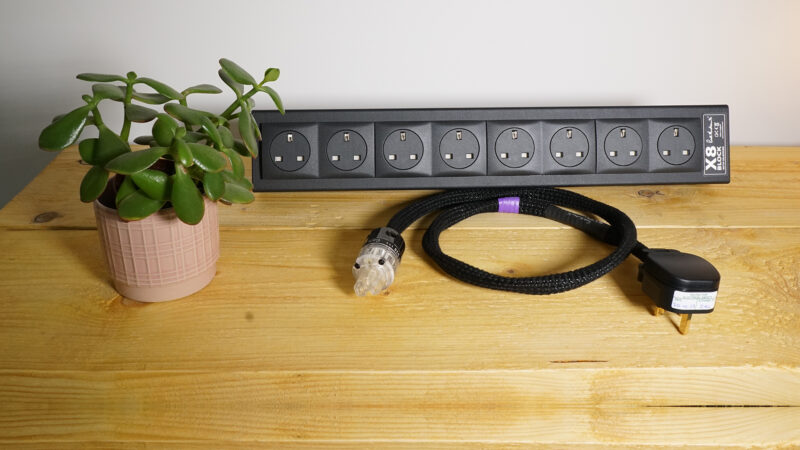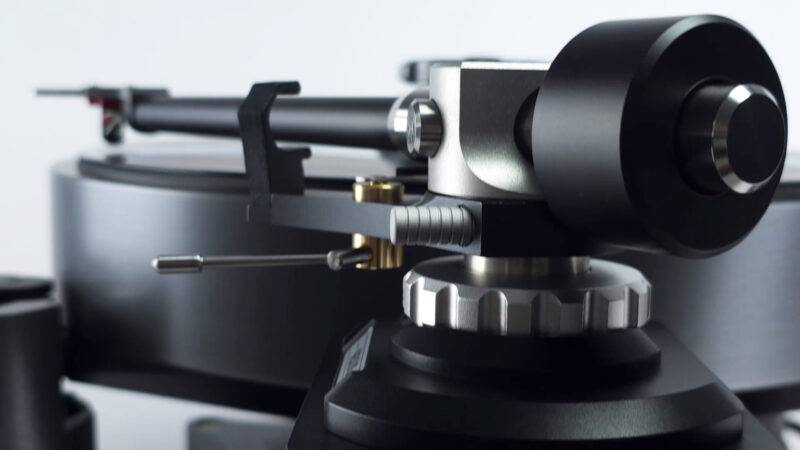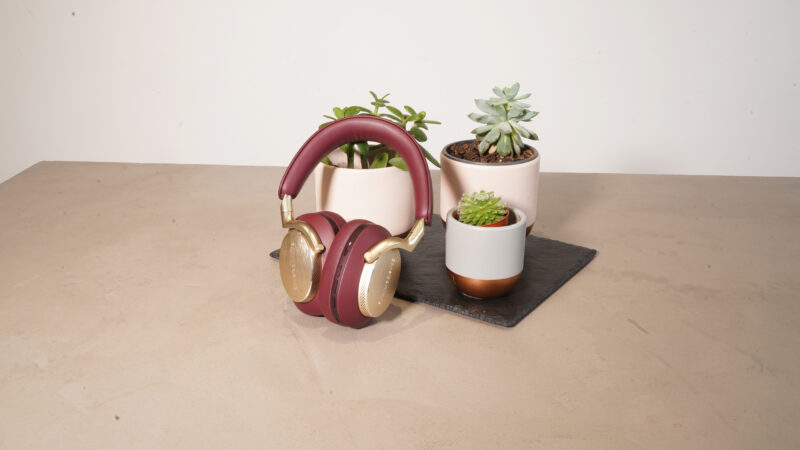As we know in the hifi game, it’s often the cumulative effect of the little things that can make the biggest difference.
So when the Chord Company presented its latest English Electric noise isolator, the EE1, at this year’s Bristol Show, I was intrigued. Firstly because of its design, as it’s about the size of a match box with a plug and play install, meaning it takes seconds to fit and takes up little space.
And secondly because of what it claims to offer, which as the name suggests, is all about removing noise from your home network.
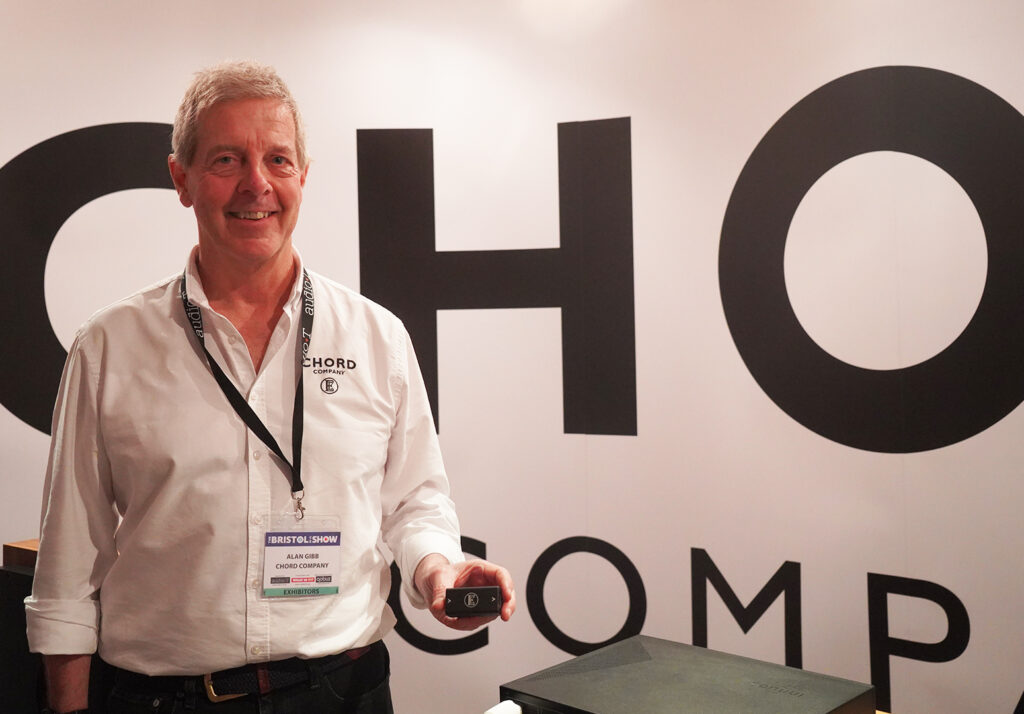
The Chord Company’s Alan Gibb wasn’t daunted by putting the EE1 through its paces back in Bristol to a room full of curious visitors and hifi press
Strike a chord
Let’s not forget that English Electric sits under parent brand The Chord Company, an AV cable specialist with three decades of skin in the hifi cable game, hence offering kit to ensure the signals its wires transfer are as noise free as possible makes complete sense. And when you think about how many devices are connected to an average home network these days all adding noise of their own into the network, it makes even more sense.
The EE1’s rationale for existence stems from similar tech and thinking applied to mains power filtering in the audio chain, which, say the boffins at Chord Co, can bring similar benefits to our hard-wired internet and network connections.
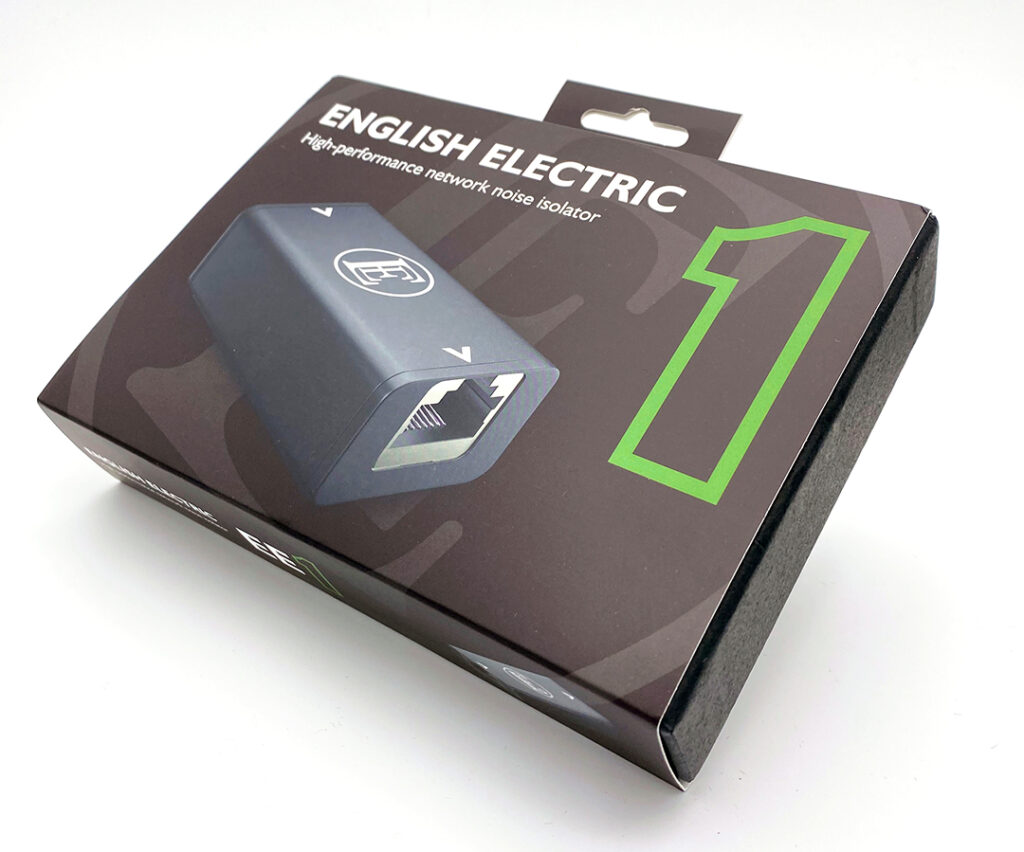
EE1 ready for unboxing
Well filtered
The EE1 network noise isolator is designed to sit within a run of Ethernet cable, ideally as close to a source component as possible, with RJ45 sockets on each of its ends. Its tech is based on that of its multi-socket bigger brothers, the 16Switch and 8Switch. But whereas these distribute the signal as a network hub, the EE1 sits up stream at the end of the chain, just before the signal finally enters your DAC or network player (meaning you can add more, should you have various Ethernet fed digital source components, including home cinema gear and the like).
It works by using common mode filtering to selectively remove low-frequency noise and filter out high-frequency noise, while allowing data to flow uninterrupted.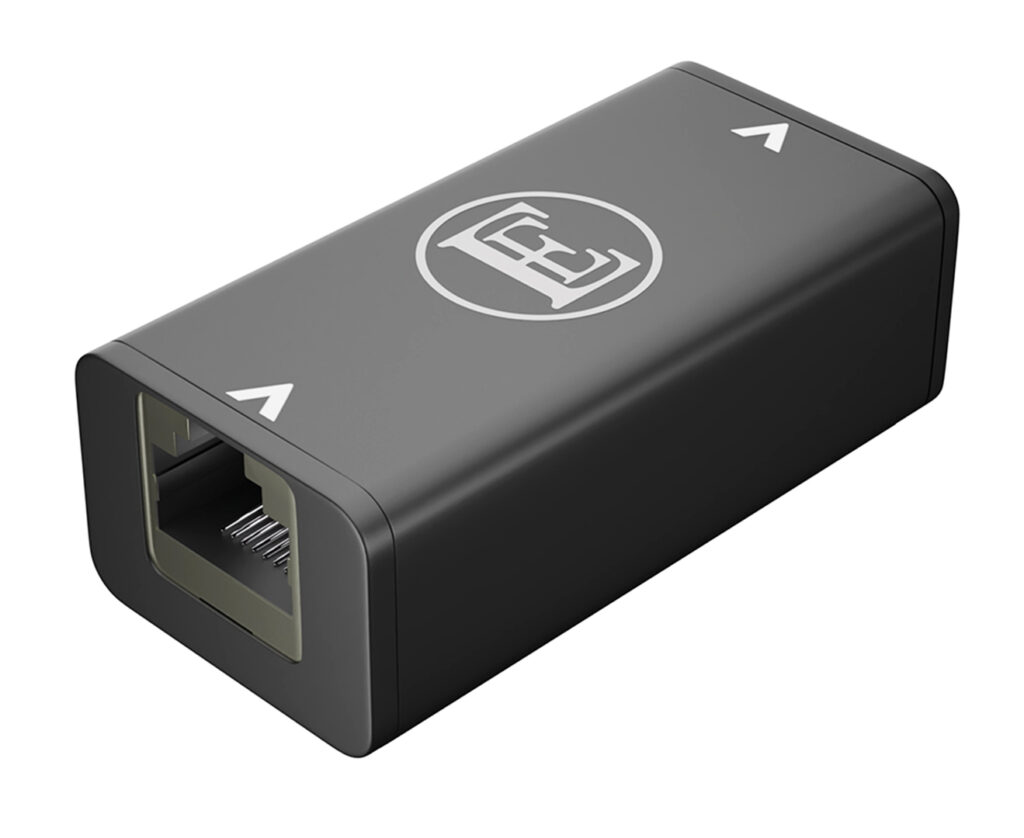
RJ45 input and output (with the latter hidden from view). Directional arrows are marked for signal flow when installing
It does this via a small transformer within its demure alloy case, which offers galvanic isolation for its differential signal lines. Added to this is an EMI filter, sporting surface mount components. All of which was on full display at the Bristol demo, with its internals proudly on show. That Chord Co has managed to fit all of this within the EE1’s 65mm long case is testament to its engineering and, in some ways, modesty (as many manufacturers would have popped this in a bigger case and doubled the price without batting an eyelid).
Performance
To understand how the EE1 fares in my system it’s firstly worth explaining my system’s network set-up, which consists of a fibre fed BT Hub feeding a Netgear ProSafe GS108 gigabit switch, which then feeds another dedidated GS108 in my listening space some 30m away via a CAT 7 burial cable. I then run seperate heavy duty CAT 7 cables to my system, which currently incudes a legacy Primare NP30 DAC/network player, a more recent Primare NP5 Prisma Mk2 network player and the DAC in my Michi X5 integrated amp.
Alongside online streaming subscriptions, I also have a NAS drive attached to my home network hosting my digital music library.
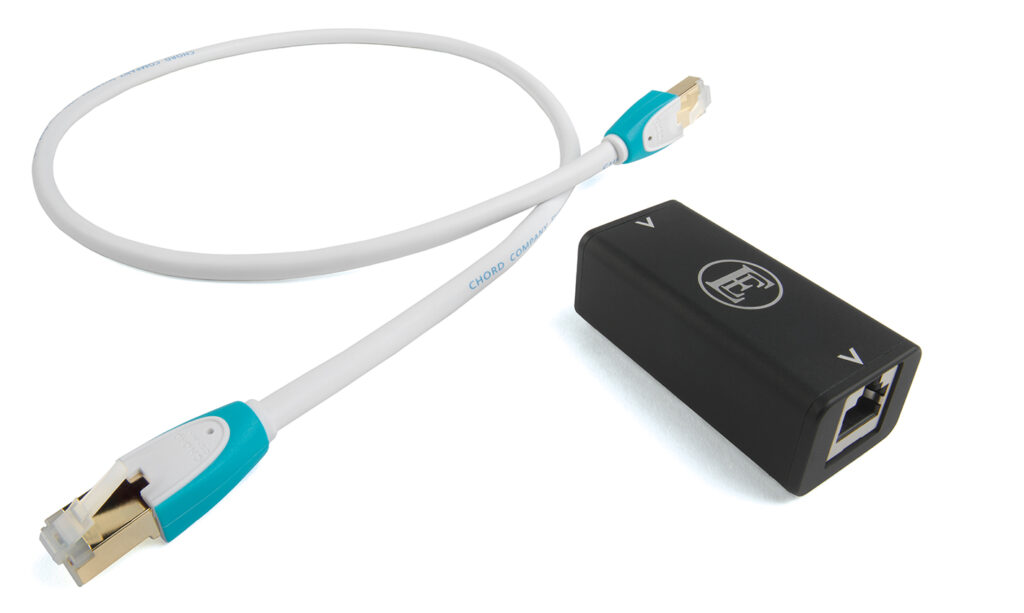
The Chord Company’s C-Stream Ethernet cable is an ideal accompaniment for connecting the EE1 to your source gear
Although predominantly feeding the Prisma, for the purpose of this review the EE1 has was tested as the last link into all three components with comparisons made, using a 75cm Chord Co C-Stream Cat 7 Ethernet cable (which costs around sixty quid on its own), to ensure the final filtered signal is in safe hands before meeting my music making gear.
Subtle success
As Joni Mitchell once said (albeit perhaps not about an Ethernet noise filter) “you don’t know what you got ’til it’s gone” and that’s what springs to mind when assessing the EE1’s performance over months of swapping it in and out of my system. Its audio footprint is slight, but removing it from my system at various intervals soon has me welcoming it back.
Hearing a 24-bit/96kHz remaster of Red Hot Chilli Peppers’ I Could Have Lied from their 1991 breakthrough album Blood Sugar Sex Magik for example and Rick Rubin’s stripped back signature sound underlines what the EE1 does best. Less is very much more with this track, with its sparse instrumentation adding to the vulnerability of its lyrics. And with the EE1 hooked up, there’s just a little less of the things you don’t want; less fuzzy edges around the plucked guitar’s opening riff, less mushy overhang in the cymbal’s sustain and less smearing in the bass notes. It’s not night and day difference stuff, but it’s there, making the recording sound that bit cleaner, simpler and all the more arresting for it. But this may not appeal to everyone, as many will like their hard rock served up a little looser and grittier, without the added focus that the EE1 adds which is a matter of taste, but if your quest is hearing music in its purest form then the EE1 might be another step in that direction.

EE1 and C-Stream cable on data duties into my Primare NP5 Prisma Mk2 network player
As recent recordings go, they don’t get much better than Peter Gabriel’s i/o album (at 24-bit/96kHz) and having the EE1 in the mix makes it sound even less compromised. On The Court (Bright-Side Mix) for example, high frequencies sound more crystalline in the soundstage, as though they’ve had a little extra polish, while at the other extreme the inky blackness that surrounds the rumbling bass notes feels a shade darker and with a thicker sonic consistency.
Removing the EE1 from my system and the Gabriel track sounds just as well pieced together, but the finesse around the extremes seems a tad softer, especially at moderate volumes.
On more standard-res material the EE1’s impact is less obvious. For example I’ve recently been revisiting Grant Lee Buffalo’s early albums with their ’90s production (at 16-bit/44kHz) that’s typical of the times, which is also part of their charm. While the music remains just as appealing, the cleaner presentation that the EE1 brings perhaps also reveals more of the original albums’ shortcomings and recording limitations. But this is likely due to the lower resolution data that’s flowing because let’s not forget, the EE1 is all about removing noise, not enhancing resolution, so what you’ll hear can only ever be as good as the original source material on offer, and therefore the more hi-res data you can give it, the more you’ll reap the EE1’s subtle rewards.
In summary
In many ways the EE1 is like so many devices in today’s modern age, whereby you don’t realise you need it until you try living without one!
If I’m honest network filtering hasn’t been at the top of my hifi upgrade list, given my system is mostly built around newly installed and over-spec’d connections. But adding the EE1 into my system has me challenging this. Sure there was nothing lacking in my digital front end prior, but with it installed, there’s just that little bit more finesse to the music, particularly with well recorded material that benefits from the added focus the EE1 brings. If you get the chance to try one then don’t hesitate, as I for one won’t be going back.


